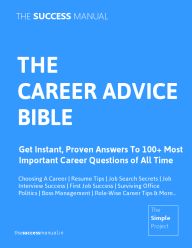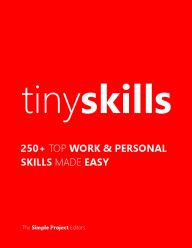On February 16, 2025 By thesuccessmanual Topic: Remarkable, Book summary
This guide belongs to 100 Ways To Be Being Remarkable Series, a special project that brings you business and self-development advice from The Success Manual.
TWELVE SMART LEARNING QUESTIONS
1. What’s my purpose for reading this
- Be specific
- Not everything involved is equally important
2. What do I already know about this topic?
- Starts generating questions
- Finds holes in your knowledge
- Puts you on the lookout for new information
- Valuable for resourceful thinking
- Acts as a review
- Makes you an authority
3. What’s the big picture?'
a. Find
- Main ideas and themes
- Important terms and concepts
- Overall organization
4. What’s the author going to say next
- Expect the author to answer your questions
- Helps you stay engaged
5. What are the “expert questions”?
- What is this made of
- How can this be identified
- What process causes this
- Where is this usually found
- What can I tell about the history of this
- What’s the definition of this
- What’s an example of this
- What are the different types of this
- What is this related to
- What can this be compared with
6. What questions does this information raise for me
- WhoWhatWhenWhereWhyHow
- So what
- Says who
- What if. . .
- What does this remind me of
- Don’t wait to read the answer – guess what it will be
7. What information is important here
a. 80-20 rule
b. Clues
- In reading
- Beginning and end
- Anything emphasized graphically
- Gist of any chart or diagram
- Chapter summary
- In lecture
- beginning and end
- anything on the board
- anythign repeated, emphased, or stressed
- teacher’s use of language
- responses to questions/comments
- thoughts, reactions, and questions
- anything after long pauses, takes time to explain, or has difficulty expressing
- anything discussed, but not covered in textbook, especially disagreements with textbook
- details vs. big picture
- references to material covered previously
- raised, but unanswered questions
- handouts
c. continue updating and condensing notes
8. How can I paraphrase and summarize this information
a Use your words
- Use few words
- Reading notes
- Don’t take notes sentence by sentence
- Take notes from memory
- Organize notes into a clear structure
- Translate graphics into words
- Develop a personal shorthand
- Print (rather than cursive)
- Use loose paper
- Write on one side only
- Don’t just recopy notes
- Don’t use a computer to type notes
b. Class notes
- Seek out buzz words and pet phrases
- Jot down questions to think about later
- Borrow notes if you miss a lecture
c. Marking textbooks
- Avoid highlighters, pens that smudge, & using rulers
- Read entire paragraph before underlining anything
- Underline as little as possible
- Record thoughts and questions in the margin
9. How can I organize this information
- Reorganize the information as many ways as possible
- What items are similarDifferent
- What items depend/build on each other
- How do different items compare in terms of expert and orientation questions
10. How can I picture this information
- Have scratch paper
- Try different techniques; emphasize relationships and relative importance
- Be creative
- Avoid outlines, they’re too linear
- Don’t rely on graphics from the teacher or textbook
- It may not be possible, but try making everything visual
11. What’s my hook for remembering this information
a. Hooks
- Pictures
- Patterns
- Rhymes
- Stories
b. Keys
- Understand it
- you can reconstruct what you understand
- ask how you would reconstruct it
c Create a hook
- devise them yourself
-. use more than one
- any hook works, it doesn’t have to make sense
- Link it
- make it crazy
- Think small and thorough
- Get emotionally involved
- personalize the info
d. Engage multiple senses
- visual
- auditory
- kinsethetic
- Smell the roses
- take in the surroundings to help connect to the info later
e. Sleep on it
- review before going to sleep
f. Use it or lose it
g. Quiz yourself periodically
- don’t confuse recognition with recall
12. How does this information fit with what I already know
- Pare down the notes you study from (but don’t discard old ones)
- Get down to one sheet
- Write small, if necessary
- Adapted from ‘What Smart Students Know’ by Adam Robinson
Read Part of this Two Part Guide titled Taking Exams Here.
If you liked this article, please bookmark it on Delicious or share on Twitter. Thanks, friends. Follow us on Twitter.
We don't recommend any other guide than our very own The Success Manual - Encyclopedia of advice to 130 most important skills.

